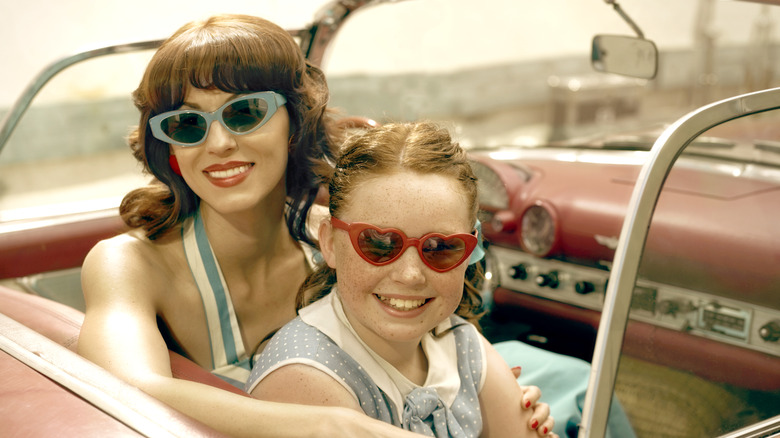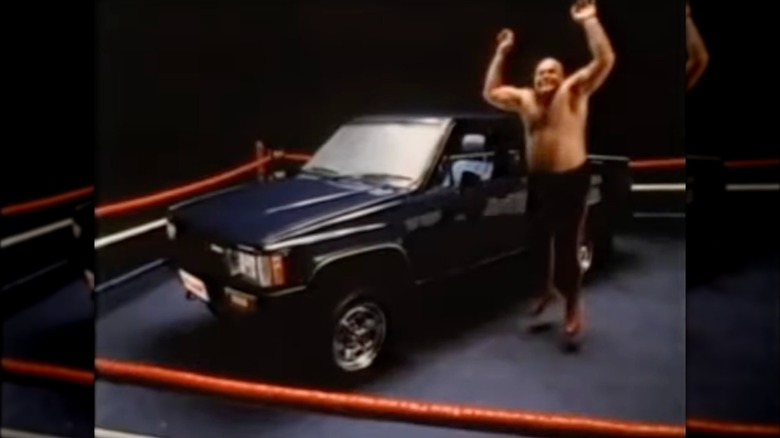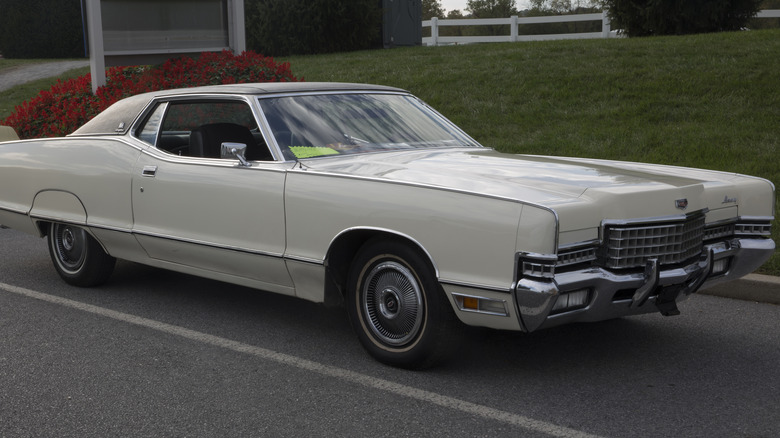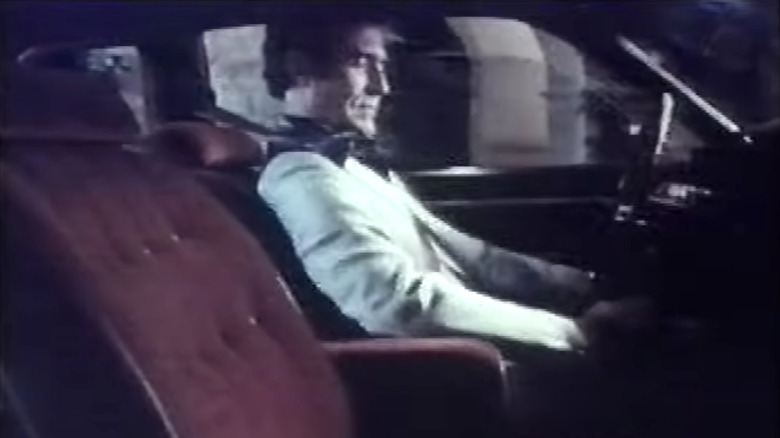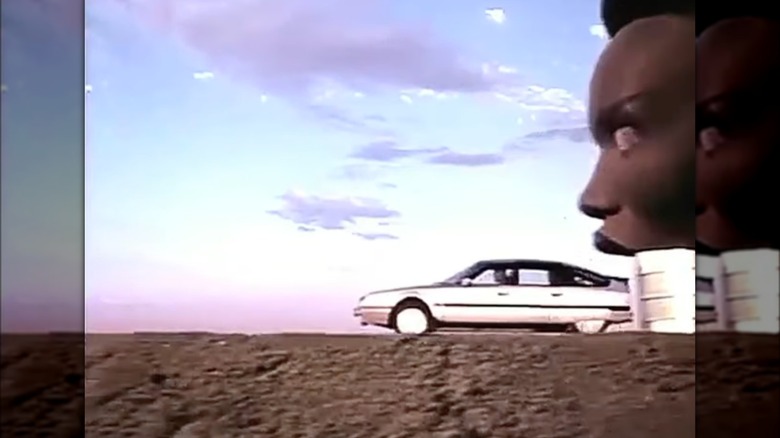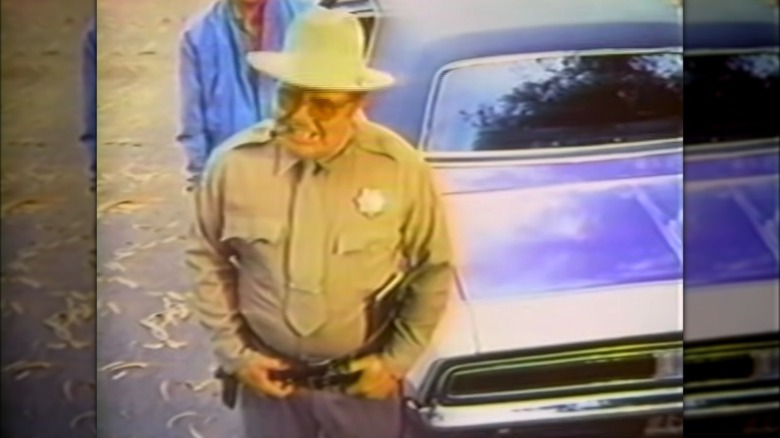5 Retro Car Ads That Prove Old-School Advertising Had Charm
This may come as a shock to younger readers, but television commercials actually used to be entertaining. Sure, they always existed solely to get us to buy things, but until the 2010s or thereabouts, there was much more of an artistry to them, and many of them were genuinely funny. These days, it's rare, with the best commercials generally airing during the Super Bowl, but not much of interest for the rest of the year when ad agencies aren't planning for the most-watched event of the year in an age of dwindling TV viewership.
Figuring out exactly how and why this changed is not easy, but there was a shift. In the 1980s, you could buy board games built around rewatching a videotape of great commercials. Even if we didn't have YouTube today as an outlet for that kind of thing, can you imagine anyone interested in something like that if the commercials were of the quality they've been more recently?
It used to be better. Some commercials were funny, others were weird, and some were just plain clever at making you remember them. But overall, TV commercials, both in general and specifically for cars, were of a much higher quality before recently. Let's look at five of the best examples of what we've lost as car commercials, in particular, have gotten more generic.
Toyota featuring WWF wrestlers
For roughly the first half of the 1980s, Toyota built its television commercials around the slogan "Oh, what a feeling," which went hand-in-hand with the protagonist of a given commercial jumping up in the air, arms outstretched in a victorious pose. It was one of the iconic ad campaigns of the era, and one "oh, what a feeling" sub-campaign stands out as being particularly lighthearted and outside the box: When Toyota ran a series of ads in 1986 featuring WWF (now WWE) wrestlers. Until crossover star John Cena became the voice of Hyundai in 2020, car companies largely stayed away from pro wrestlers. Still, at least in Australia, where the campaign ran exclusively, that wasn't an issue in 1986.
Most of the spots are short, about 15 seconds long, but they're memorable. WWF announcer "Mean" Gene Okerlund handles the voiceovers while both bigger stars (like The Iron Sheik, George "The Animal" Steele, The Killer Bees, and Okerlund himself) and less-notable names (like Paul Roma, S.D. Jones, and Steve Lombardi) were featured, with the star of each ad doing some version of the "oh, what a feeling" celebration.
The one featuring Sheik is maybe the standout, with Okerlund stressing "the freedom of the wind in your hair" as the Iranian wrestler's bald head is revealed while he enjoys the benefits of the vehicle. Steele, meanwhile, attacked a Hilux pickup truck to showcase its durability, while the villainous Moondogs got knocked out by running into a van and station wagon to allow Okerlund to brag about Toyota's crash protection features.
If you're a child of the '80s who was a wrestling fan back then, these will definitely tickle you, even if you're not someone who saw them in 1986 in Australia.
Mercury uses a Cartier jeweler to showcase the Marquis Brougham
Starting in the early 1970s, Mercury made a point of showcasing the smooth ride of their cars with a series of ads that featured people accomplishing precision tasks while in the backseat of a Marquis Brougham. Most memorably, a 1972 spot featured a Cartier jeweler trying to split a "rough diamond" in the back of a Marquis traveling through New York City traffic. "Struck precisely, the diamond could double in value," explained the voiceover. "The slightest mistake? And it's worthless dust. Our speed? 35 miles an hour." The result was "perfect," according to the jeweler, and the commercial closed with the narrator declaring that the Marquis had "a ride as steady as a rock."
It was a very clever and memorable commercial that ended up as part of a series of related Marquis ads that included the likes of chauffeurs rating the ride of the car while blindfolded and actress/model Jennifer O'Neill applying makeup in the back seat during a ride. Having said that, these days, the diamond spot is probably better remembered as the inspiration for a 1977 "Saturday Night Live" commercial parody featuring Dan Aykroyd as the pitchman for the "Royal Deluxe II." Regardless, it elevated an already great commercial into something even more legendary.
[Featured image by Mr.choppers via Wikimedia Commons | Cropped | CC BY-SA 3.0 DEED]
Chrysler and Ricardo Montalbán's Corinthian leather
This one is more about a broader campaign than a single commercial, but there's a reason for that. To whatever degree memes were a thing before widespread internet adoption, they were a result of popular culture being more unified thanks to the more limited range of entertainment options and, in particular, TV networks. And no car commercial today could ever compare to the memetic universality of Chrysler's ads in the 1970s and 1980s that featured Mexican-American "Fantasy Island" actor Ricardo Montalbán touting the fine/rich/soft "Corinthian leather" covering the seats inside their Cordoba cars.
Something about Montalbán saying "Corinthian leather" in his distinct voice and delivery clicked with the public to the point that the phrase became joke fodder throughout pop culture for decades, far beyond the life of the ad campaign. As memorable as it was, though, what was Corinthian leather in the first place?
"They found a leather that was very pliable, very soft, and very durable," Montalbán told David Letterman in an April 1987 TV interview. "And I don't know if it was because of the writer, Jim Nichols, who wrote the commercial for Chrysler for me at that time, he wanted to find a word that sort of elegant, that I could say with a little verve. And so 'Corinthian' [was it], you know what I mean?" Letterman then prompted him to confirm that the leather had nothing to do with the actual Greek city of Corinth, which he did.
Grace Jones for Citroën
One mid-1980s car commercial certainly had some charm but stood out in a big way in large part because it was, quite simply, incredibly strange. Singer/actress/model Grace Jones was very in demand when she became the face of French automaker Citroën's CX 2 car in a 1985 European ad campaign, one that took advantage of her very peculiar, futuristic brand of cool that defined her at the time.
The ad opens with a giant mechanical Grace Jones's head pushing its way up to the surface of the desert and spitting out a CX 2 driven by the actual Grace Jones. She brings the car to a sudden stop, a whistle is heard, and the title track from her 1985 album "Slave to the Rhythm" starts playing. She sings the song while turning her head to look out the passenger side window, and then she drives back into the mouth of the representation of her own head, which burrows its way back into the ground. And...that's about it.
What exactly was going on here and where the idea came from is hard to pin down, at least using English-language news databases. Some articles online claim that the commercial was banned in some countries, but none explain how or why, much less provide a source for the claim. Regardless, it was an incredibly distinct and memorable commercial for a much less memorable car.
The Dodge Challenger RT is NOT a racer
A Dodge Challenger RT ad from 1970 had a pretty simple premise: The driver of a Challenger is pulled over by a small-town southern sheriff who's convinced that he's "operating a racing-type vehicle inside the city limits." As they go over the features of the car, the driver doesn't really help himself, as, among other things, he meekly notes, when prodded by the sheriff, that the car has racing stripes and an "option slide stick racing shift." Noting that the car has concealed windshield wipers and dual headlights, feeling those were uncharacteristic of a racer, didn't help him, as he was threatened with being booked for "sassing a law officer," and then the narrative portion of the commercial ends.
"If you can handle the way people react to your 1970 Dodge Challenger, you could be Dodge material," is the tagline that closes the ad — sort of — read by an onscreen spokeswoman, although the sheriff gets the last word. "Now look, boy: I know a racecar when I see one!"
Though the ad is cartoonish, and the point is obvious that the Challenger is an incredibly cool racing-class car or close to it that happens to be street-legal, there was a genuine problem with street racing in that era. So not only was the ad entertaining in a way that also got across what made the car unique, but it borrowed from a real-life issue that was pervasive in the media at the time.
